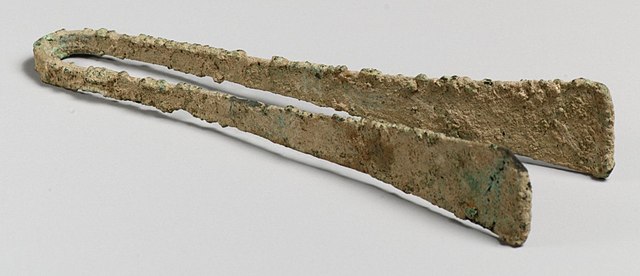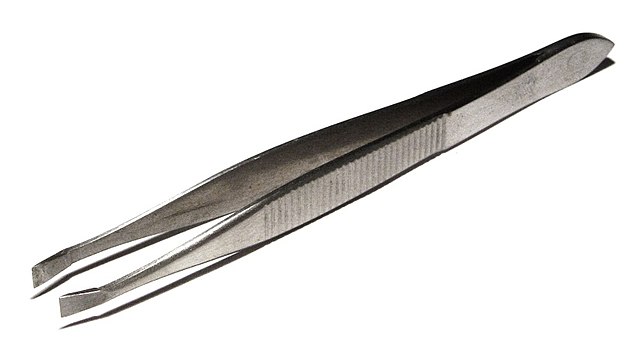Optical tweezers are scientific instruments that use a highly focused laser beam to hold and move microscopic and sub-microscopic objects like atoms, nanoparticles and droplets, in a manner similar to tweezers. If the object is held in air or vacuum without additional support, it can be called optical levitation.
A photograph of a nanoparticle (diameter 103 nm) trapped by an optical tweezer. The nanoparticle can be seen as the tiny bright spot in the middle. For additional control two copper electrodes are placed above and below the particle.
A generic optical tweezer diagram with only the most basic components.
Tweezers are small hand tools used for grasping objects too small to be easily handled with the human fingers. Tweezers are thumb-driven forceps most likely derived from tongs used to grab or hold hot objects since the dawn of recorded history. In a scientific or medical context, they are normally referred to as just "forceps", a name that is used together with other grasping surgical instruments that resemble pliers, pincers and scissors-like clamps.
Two types of modern-day conventional metal tweezers with pointed tips
A pair of bronze tweezers attributed to the Minoan civilization, c. 2900–1050 B.C.
Gold tweezers recovered from the Royal Cemetery of Ur, Iraq 2550-2450 B.C.
Flat tip conventional tweezers






